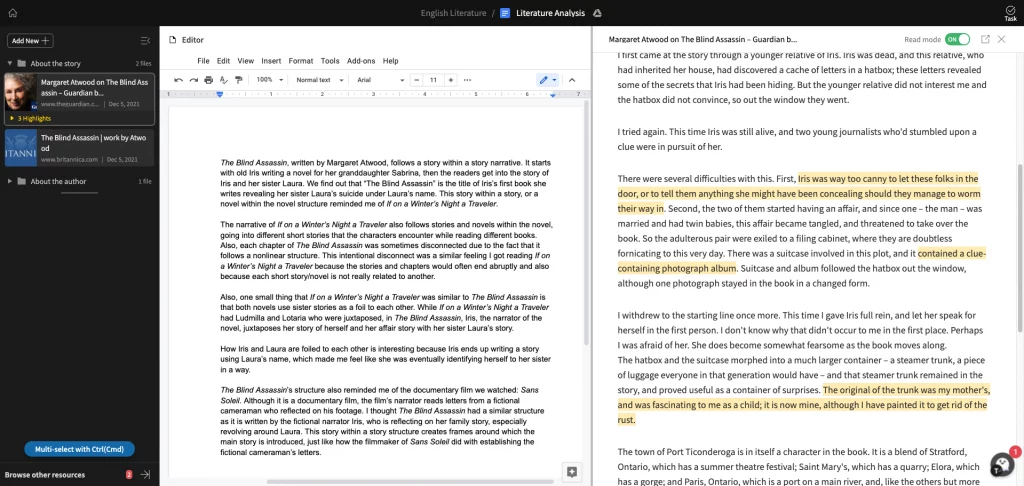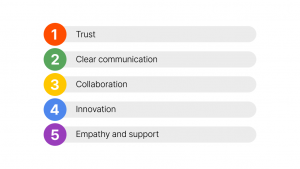As you begin to skim through the first sentences of this blog post, it’s highly likely you’re one of the individuals looking to seek methods in improving writing productivity . Why? Clearly because as you’re reading the title of this post and are looking for answers, but specifically speaking, you’re often met with times where you struggle to meet deadlines. But it worries us to see that there are so many existing answers on the web, yet, none of them really provide a solid methodology in actually increasing your writing productivity – in fact, they all give somewhat obvious answers.
In our lives, writing has become a norm, applicable to almost any aspect or field of professional work that exists in society. Unfortunately, in most situations, we’re given a limited amount of time to produce quality content – which is in fact, quite difficult. In order to truly understand how we can improve productivity, we need to define it.
Productivity is measured by output per unit of input – if we were to translate this into writing, it would mean how effectively we produce writing with the minimal amount of resources, which in this case is primarily, time. But if you’re simply writing for speed, it’s natural for your quality to deteriorate over time and thus, you’ll be finding yourself back to the start to make those improvements – which once again, takes time.
So how do we actually achieve the so-called “writing productivity”? Well, we need to find the perfect medium that achieves both quality and quantity simultaneously while maintaining a subtly quick yet sustainable pace in our writing. Once you reach that perfect balance you’ll be creating excellent content in a short period of time. Luckily there’s a new rising approach that may allow you to reach that steady buoyancy, and it consists of two aspects: Technical and Non-Technical.
Technical Writing Skills
This is the main juice of the post. Technical writing skills really involves the necessary abilities to create quality output in a short period of time.
Just Start Writing.
Starting a piece of writing is the most difficult part of the whole process. Creative ideas have sparked within your mind, yet the chaotic movement between these resonating concepts make it hard to lay it out neatly into the form of text. The same effect applies to research, or any factual paper that depends on data and information. The amount of input overwhelms your capability to effectively and productively create output.
Why is this process so hard? You may have heard of the phrase “an image is worth a thousand words”. In this case here, it translates into a slightly different context – when our brain is thinking about ideas, it’s a form of imagination. Imagination is the action of processing visual elements within your mind, without it physically existing in reality. As much as imagination is based around the concept of “visualization”, our beginning stages of imagination apply similarly. With an overflow of ideas, we have thousands of images that are processed in our brain that “imagine” the content of your writing as well as the final output.
Thousands of images is equivalent to a thousand words… multiply that by the visualizations you’re having… you get the idea.
In order to really drive a solid start to your writing, you need to…start writing. Now as silly as this may sound, it’s actually quite effective. As the ideas are springing in your head, don’t let them simply bounce within your mind – let it out in visual text.
This process makes it a lot easier to organize your thoughts and ideas and should assist in organizing the structure of your piece. The power of writing your ideas and thoughts down to visual text brings the following benefits:
- You can remember your intuitive ideas
- You can find correlations between these ideas that help structure your writing
This brings us to the next step, which highlights the importance of creating a structured plan for your writing. Now researchers hold your horses – if your thoughts and ideas require some research, there’s a slightly different approach to that, in which you can check out a detailed article here. Let’s wrap up this section with a remarkable quote in business context, which is surprisingly quite relatable when it comes to writing.
Just start. Don’t worry that you don’t have all the answers yet.
Alli Webb
Create a Framework for Your Creation
Creating a structure for your writing allows you to achieve one, crucial element of your writing – to ensure that the most important points of your piece are delivered effectively, and in a manner in which readers can easily follow.
We exist in a world where there are a countless number of writing formats; business reports, creative writing, blogs, articles, research papers etc. It’s important to note that all these different formats follow a structure that is not consistent among them all. However, in order to help you get started, the structure of a writing is generally split into two main methods:
- Chronological
- Non-Chronological
The two types are quite self-explanatory. Chronological structure enables readers to interpret necessary information in an order that flows smoothly, as the content itself builds up to the conclusion or the thesis of your writing piece. Non-chronological, rather gets to the point straight away; So that they can absorb information that is related to the conclusion as they read along. In most times, with the exception of business related situations, you’ll be following the Chronological structure.
The biggest point to take away here is that a structure enables you to write in a manner where you can easily refer to something that enables you to smoothly transition your thoughts into your writing. By having a structure, you should be able to keep on track with keeping important points delivered smoothly, and more importantly, help you stay on track whenever you’re getting back to your paper. You’ll be surprised by how much time we waste on finding information, and getting that flow back once you log off your computer and come back to it the next day.
Now this blog post isn’t a writing guide, so here’s a link for those who want to take a deeper dive in the importance of structuring your writing. Nonetheless, it’s absolutely necessary to follow a structure so that you can create a steady flow in your writing.
Have Everything You Need in One Place.
This is probably the highlight of this blog post. Surprisingly, not a lot of talented individuals seem to utilize this methodology in achieving successful writing productivity. One of the biggest variables that factor in the productivity equation, input over output, is time. Why? Because time is the biggest input in this formula! Yet, many of you may be confused – how is the aspect of saving time a technical writing ability? Buckle up, because you’re about to hear one of the greatest tips in truly achieving – Writing Productivity.
In real life, one of the easiest ways to reduce time wasted is to reduce the time and effort required to reach something that you need in the process. This is applicable for a lot of areas, such as going back and forth from the fridge to retrieve your ingredients, or going around the library searching for a book that best suits your school work. The same applies to digital writing and documentation – if we had all the information from the resources (research sources, files, references, drafts – you name it) within arms reach while we carry out the process of writing, you can imagine the amount of time that we can save from doing so. In fact, according to McKinseys, we already waste an average of 2.5 hours per day in finding scattered information.
Unfortunately, as much as we heavily rely on writing our documents through computers and digital editors, there really isn’t a suitable environment that enables us to truly write productively. We rely on our classic hierarchical tree structure of the folder system, and need to send files and resources to ourselves via email or some form of chat. Eventually we’re always wasting unnecessary time in reaching for these references, as well as finding ourselves lost in trying to relocate them.
What if we could have every digital resource within arms reach so that we can save a huge amount of time, as well as write productively and with quality? This is where you can use Typed’s workspace to achieve this perfect writing environment, which utilizes the favored Google Docs and takes it another level in providing the perfect environment for accessing your resources, and referencing information as you create your marvelous piece.

(In fact, I managed to write this post in simply two days as I referenced over 15 resources as I wrote along.)
Non-Technical Writing Skills
These are the skills that may come in handy in providing motivation for you to effectively use the time for your work. I’ll be avoiding the most obvious answers that already exist out there – and focus more on tips that I found useful that really helped me write productively. These will be short, but direct and concise – Bare with me, we’re nearly done!
Set Small Objectives
We all know that setting objectives enables you to power yourself to achieve a certain result. This systematic process also plays a crucial role in writing. Objectives can vary, but we suggest that setting small, realistic goals is what makes a person successfully write productively. Hopefully, if you’re someone that has read this post consistently, you’ll remember that I mentioned about following a framework. That’s right – the structure, or the outline itself can be considered “checkpoints” in your writing. Each content, or area has it’s very own concentrated topic, and it’s absolutely important that you try to write as much as you can in one specific area in a given day – in other words, don’t write your section about, let’s say, “The impact of carbon emissions to California’s environment” in on-off periods. If you’re writing a paper about the environment, a section like this is best to be written in a period of time, which you can set as an objective. This way, all your process of thinking, as well as the knowledge that comes from within stays consistent throughout your writing. Don’t worry about making it sound perfect, yet – which leads us to the next piece of advice.
Write Now, Validate Later
If you started writing- great, that’s a good start. If you’re just printing words that come up on the top of your head as you work to achieve those small objectives – excellent. Keep it that way. Your sentences, and word choices can be validated and checked later. Leave the polishing till the end – and just keep writing. This step is more about your ability to maintain that grit in the very first piece of advice I gave earlier in this article.
One of the most important elements when it comes to writing productivity is disregarding anything that can deter you from your writing time. Now, I’m not going to go to the silly details of “avoid distractions” because that’s somewhat obvious. If that’s really an issue for you, read our post on “The Real Way to Improve Concentration and Focus in Writing”. Nonetheless, my advice is to forget that your sentences, vocabulary and delivery have to sound perfect. As long as you’re continuously typing your thoughts down as you go, as well as following that framework, you should be writing words seamlessly.
Seeking validation and perfection for your writing shouldn’t be done as you go along – it greatly diminishes your workflow. Workflow, especially in writing productively, is all about being consistent. So let’s leave the polishing until the end, and rather more focus on getting that concrete installed on your framework.
Consistency means focusing on the task at hand in the present moment while maintaining a long term vision.
Nitin Shah, Institute of Clinical Hypnosis
Your Work Environment is the Greatest Variable
The rest of the job is entirely dependent on you. The most obvious, yet often ignored advice such as avoiding distractions, setting time limits etc are really just points that are determined by the level of motivation you have for your work. Until now, the tips that I have given are really the know-hows of how the most efficient writers remain productive in their process of work today, and could somehow help you in achieving the maximum level of writing productivity.
Regardless of the non-technical skills I mentioned, I’d still say the key to really pushing yourself to successfully become that one person who knows the little secret in writing productively than others, is much more than just simple habits – you need to find the perfect environment for your work. This is especially important if you’re one of those people who write regularly – you’re going to want to get yourself in a systematic habit of becoming a productive writer. People add components and set their desk in a way they can work productively – the same concept can easily be applicable in a digital environment. Office, Google Docs are all great; but they offer too little. It’s about time you try putting yourself in a better work environment that helps and encourages you to become one of the most productive writers out there. It’s worth trying.



